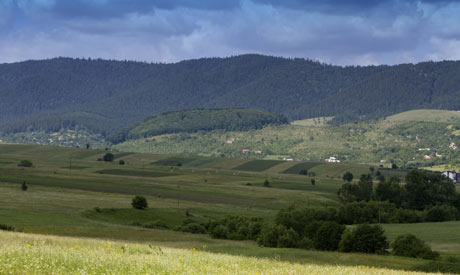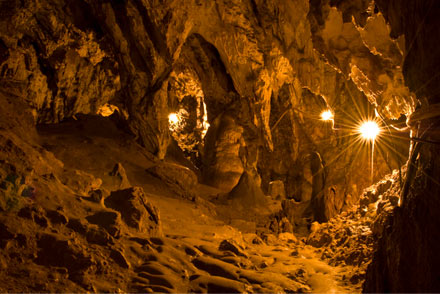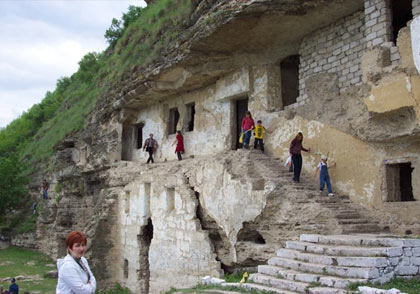Moldova
Country statistics

Land area: 12,885 sq miles (33,371 sq km)
Total area: 13,067 sq miles (33,843 sq km)
Population (2012 est.): 3,656,843 (growth rate: -1.014%); birth rate: 12.5/1000; infant mortality rate: 13.65/1000; life expectancy: 69.51
Capital City: Chisinau
Monetary unit: Leu
Languages: Moldovan (official; virtually the same as Romanian), Russian, Gagauz (a Turkish dialect)
Ethnicity/race: Moldavian/Romanian 78.2%, Ukrainian 8.4%, Russian 5.8%, Gagauz 4.4%, Bulgarian 1.9%, other 1.3% (2004)
Religions: Eastern Orthodox 98%, Jewish 1.5%, Baptist and other 0.5% (2000)
Country introduction

Located in South-eastern Europe, Moldova is bordered on the west by Romania and on the north, south, and east by Ukraine.
Moldova has a well developed network of more than 3,000 rivers, both permanent and intermittent, with the total length exceeding 16,000 km (9,941 miles). Most rivers are small and only 8 exceed 100 km (62 miles): the Nistru, Prut, Raut, Ichel, Bac, Botna, Ialpug and the Cogalnic. Most of Moldova lies between the area's of two main rivers, the Dniester and the Prut. The Dniester forms a small part of Moldova's border with Ukraine in the north-east and south-east, but it mainly flows through the eastern part of the country, separating Bessarabia and Transnistria. The Prut River forms Moldova's entire western boundary with Romania. The Danube touches the Moldovan border at its southern-most tip, and forms the border for 200 m (656 ft).
Moldova is a hilly country with approximately 13% of its land covered by forests. The biggest forest called Codri is situated in the central part of the country and it is a state protected natural reservation. The highest point in Moldova is a hill called Balanesti at 430 m (1,410 ft) high. There are several caves in Moldova, the most interesting being Emil Racovita that has many of its mysteries still waiting to be discovered.
The flora of of Moldova is rich and includes 5,513 species of wild-growing or spontaneous plants. More than 15,500 species of animals exist in the country including 462 species of vertebrates and more than 15,000 species of invertebrates. The forest ecosystems offer more diverse living conditions to animals.
The culture

Moldova is proud of a wide range of cultural activities which have preserved many traditions that are centuries old. The territory of modern Moldova was once inhabited by geto-daci tribes, whose predominant occupations were agriculture and goat herding. Many of the modern traditions are a product of crossing between geto-daci culture and the culture of other civilizations like the Greeks, the Slavs, and most of all the Romans.
In the 14th century most of the present day Moldova was an independent principality of Moldavia. But two centuries later it was governed by Ottoman Turkish rule. After 1791 Moldovia was eventually acquired by Russia. The remaining part of the country was with Turkey only to be passed to Romania after sometime. For quite a long period of time there was a dispute between the USSR who established Moldavia as an Autonomous Soviet Socialist Republic and Romania for the real possessor of the territory. Moldova gained its independence after a long time and a long trail of incidents in 1991.
The people of Moldova are very friendly and hospitable. For example, the householder will always serve their guests with great Moldovan wine and with the best dishes of food. Usually, the guests are invited into the "Casa Mare" (Big Room), a traditional room in each house where people feast together.
There are a lot of holidays in Moldova and everyone can join in them. For example, the Winter Holidays, following the traditional agricultural calendar coincide with the Christian festival of Christmas. It features greetings cards, best wishes, plays performed by both children and adults from one door to another, announcing with joy the coming of the New Year. Children especially prepare themselves by putting on different costumes and masks and perform in front of the Christmas tree. Another very important traditional holiday is "Martisor", the symbol of spring, which is celebrated in March by everybody hanging on their collar two knitted white and red ropes to symbolize nature's revival. In Spring the most important holiday is Easter, which is celebrated by cooking special food including Easter Cakes, drinking the best wine and making handicrafts such as painted eggs.
During the holidays guests in Moldova can participate in a range of cultural events including concerts such as the "Martisor", "Ciresar" and "Maria Biesu Welcomes". There are also many performances, parades and mass manifestations on Independence Day and on "Limba Noastra" Day, a holiday of the national language and national cultural heritage of the country. On Harvest Days traditional fairs are organized in towns and villages. In Moldovan villages "sezatorile" are very traditional social meetings, especially in the winter, where people sing, dance, and make handicrafts.
Folklore in Moldova has a strong Daco-Latin base and includes a system of popular beliefs and customs embodied in music and dance, in oral poetry and prose, mythology, rituals and folk theater.
Attractions & landmarks

Moldova is a very picturesque country, well known for its of sleepy vineyards, luscious watermelons, exotic sunflower fields, rustic pastoral lands and the amicable residents. For an exclusive experience of wine tour, no other destination can surpass the excitement of Moldova.
The juxtaposition of many elements makes the culture of Moldova quite unique. The architecture of Moldova is exceptionally marvelous where the Russians made the Chiinu's city center, the official buildings were brilliantly constructed in neoclassical patterns. The houses of Moldova have amazingly trimmed gardens with each household consisting of their own vineyard that is superbly surrounded by low metal ornamented bars.
The much hunted tourist destinations of Moldova include the exuberant villages, magnificent monasteries and charming natural attractions. Tourists can visit the Japca, Tipova, Saharana and Cosauti village to experience the tranquil village life. Tourists looking for monasteries can visit the Hirjeuca Monastery, Capriana Monastery and Hincu Monastery.
There are also many museums in Moldova that have fostered the relics from the pages of history. Visitors can check out the Museum Complex "Medieval Town of Orhei", Museum of Ethnography and Archeology, "Alexandr Pushkin" House and the Museum of Popular Arts from Ivancea. Most significantly the wine tours of Moldova are world famous and among the most sought after whilst visiting Moldova.